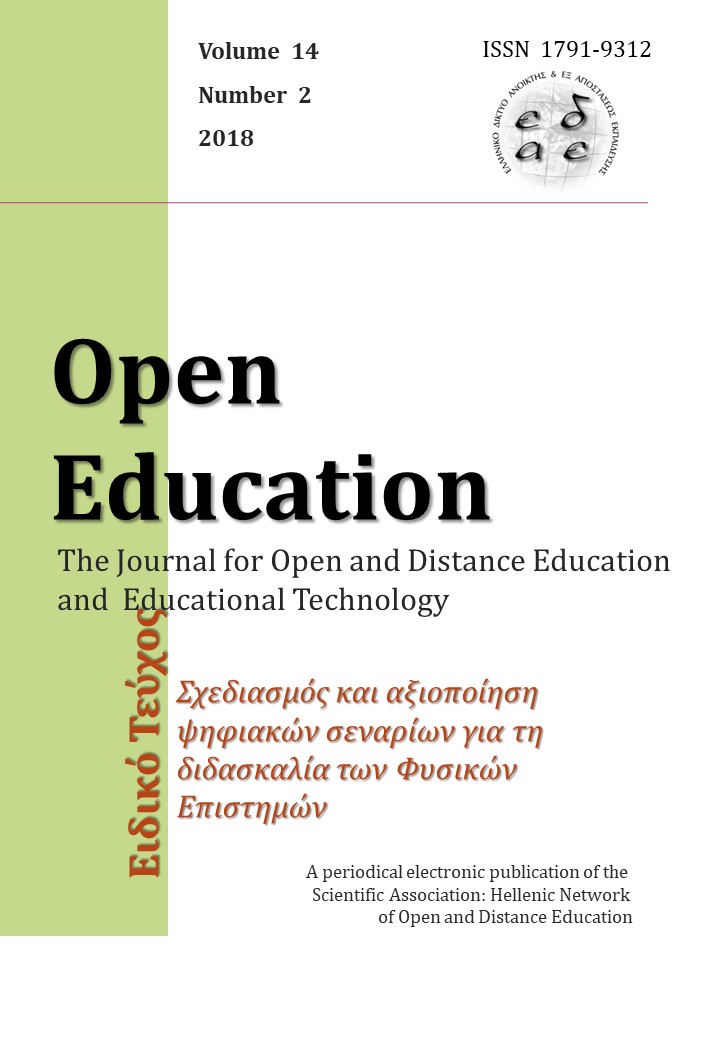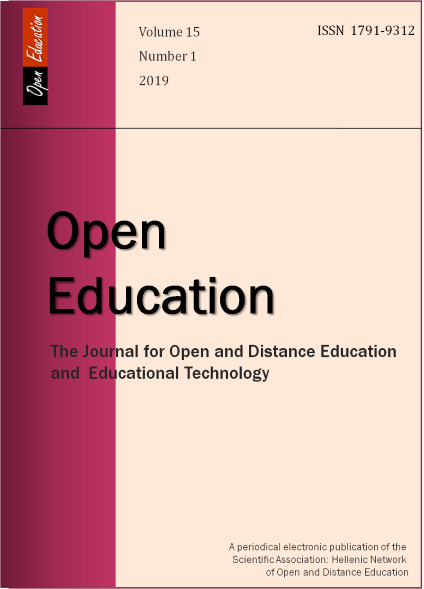Environmental educational activities using data from the Internet of Things

Abstract
tools in their curriculum. Thus, in terms of overall acceptance of both the tools and the infrastructure inside buildings and the schools’ curricula, these results indicate that GAIA’s educational scenarios had a quite positive initial response. In addition to the GAIA platform that facilitates educational activities and scenarios for energy awareness and environmental sustainability utilizing real data from IoT sensors, we present here a number of alternative scenarios utilizing different data sets. Marine water scenarios remain an undiscovered but challenging territory that remains unexplored in STEM education. IoT platforms such as GAIA can facilitate educational scenarios towards the sustainability of the environment, based on understanding the implications of real world data.
Article Details
- How to Cite
-
Τζιωρτζιώτη Χ., Μαυρομμάτη Ε., Μυλωνάς Γ., & Χατζηγιαννάκης Ι. (2018). Environmental educational activities using data from the Internet of Things. Open Education: The Journal for Open and Distance Education and Educational Technology, 14(2), 166–182. https://doi.org/10.12681/jode.19013
- Issue
- Vol. 14 No. 2 (2018)
- Section
- Section 1
Copyright Notice
Authors who publish with this journal agree to the following terms:
Authors retain copyright and grant the journal right of first publication with the work simultaneously licensed under a Creative Commons Attribution Non-Commercial License that allows others to share the work with an acknowledgement of the work's authorship and initial publication in this journal.
Authors are able to enter into separate, additional contractual arrangements for the non-exclusive distribution of the journal's published version of the work (e.g. post it to an institutional repository or publish it in a book), with an acknowledgement of its initial publication in this journal.
Authors are permitted and encouraged to post their work online (preferably in institutional repositories or on their website) prior to and during the submission process, as it can lead to productive exchanges, as well as earlier and greater citation of published work.



